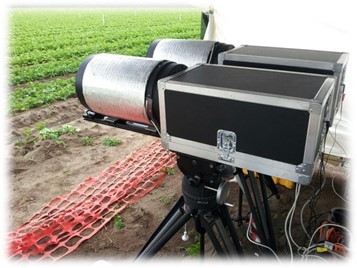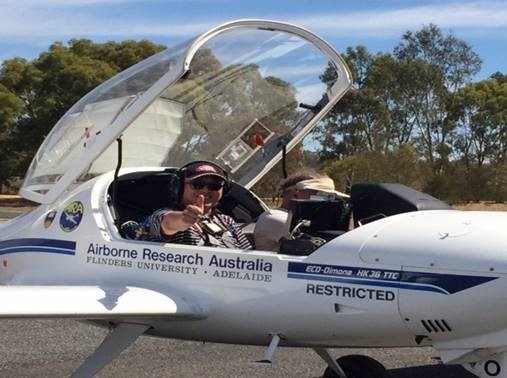Agricultural Data Science
The Agricultural Data Science research group employs data-centric approaches to tackle agricultural carbon and nitrogen challenges.
Leveraging machine learning, meta-analysis, and process-based modelling, we improve the reliability in predicting carbon and nitrogen processes and evaluate the effectiveness of strategies to mitigate nitrogen pollution and greenhouse gas emissions in agroecosystems. We establish sustainable nitrogen indices, aiming to substantiate Australia’s ‘clean and green’ food reputation and guiding consumer choices while incentivising sustainable farming practices. In collaboration with the HyperSens Lab, we utilise remote sensing and GIS to analyse spatio-temporal data, enabling optimal resource allocation and precise decision-making in agricultural production.
News and events
Contact
For enquiries, please get in touch with group co-leaders:
Dr Alexis Pang
Lecturer, Precision Agriculture and Soil Science
alexis.pang@unimelb.edu.au
+613 8344 7190
Dr Shu Kee (Raymond) Lam
Senior Lecturer, Climate Change and Biogeochemistry
shukee.lam@unimelb.edu.au
+613 9035 9619
The Agricultural Data Science research group focuses on creating opportunities for innovation in big data to support the global efforts towards sustainable intensification of agriculture.
Real-time, continuous field-scale measurement of greenhouse gas emissions from farms
We have a suite of sophisticated instruments for gas measurements that offer high resolution of dynamic real-time measurement and monitoring of key direct and indirect greenhouse gases (CO2, CH4, N2O, NH3), including:
- Open-path Fourier Transform Infrared (OP-FTIR) spectrometer
- Closed-path FTIR spectrometer
- Quantum Cascade Lasers (QCLs)
- Open-path lasers.
Coupled with advanced advection-dispersion modelling and high-resolution environmental sensors, we are able to determine the spatial and temporal variation of greenhouse gas emission, transport and deposition.
Quantum Cascade Lasers have high precision (ppt levels) and high response (10Hz) for NH3, N2O and CH4 which can be used for the Eddy Covariance tower to measure large-scale and long-term greenhouse gas emission and NH3 dry deposition. We have also integrated QCL with the aircraft for regional scale greenhouse gas measurements.
Contact information
Please email Professor Deli Chen for more information.
Professor Deli Chen
delichen@unimelb.edu.au
Our researchers and graduate research students.
Academic staff
A/Prof Shu Kee Lam
Shu Kee (Raymond) Lam's research focuses on soil carbon and nitrogen dynamics in agroecosystems, including soil-plant interactions under climate change (elevated atmospheric CO2 concentration) and mitigation of greenhouse gas emissions using urease and nitrification inhibitors. He also has expertise in global data synthesis (including meta-analysis).
shukee.lam@unimelb.edu.au
Dr Alexis Pang
Dr. Alexis Pang’s research interests rely in the area of precision agriculture, specifically the spatially and temporally variable water and nutrient management.
alexis.pang@unimelb.edu.auDr Baobao Pan
Baobao Pan's research focuses on soil carbon and nitrogen dynamics in agro-ecosystems by integrating big data analytics, machine learning techniques and process-based models.
baobao.pan@unimelb.edu.auDr Emma Liang
Xia (Emma) Liang’s research focuses on reactive nitrogen assessment, nitrogen footprint quantification, sustainable agriculture indicators and food credentialing at multiple scales, from local through to global levels. She also has expertise in global data synthesis and GIS. Her work is an exciting new research field nationally and internationally.
liang.xia@unimelb.edu.auGraduate researchers
Chuanzhen Zhang
Zhonghua Ma
Huirong Jing
Yifan Cao
Jingyi Xu
The Agriculture Data Science research group focuses on creating opportunities for innovation in big data to support the global efforts towards sustainable intensification of agriculture.
Modelling, machine learning and meta-analysis
To achieve efficient agricultural nitrogen (N) management, our group applies process-based agroecosystem simulation models to simulate, predict and evaluate the impacts of management practices on N losses through different pathways, thereby developing decision-support tools. More recently, we integrated agricultural big data with machine learning to revamp existing parameters of agroecosystem models and improve the reliability of model prediction in N processes. We have also applied meta-analytic techniques to national and international datasets on soil-plant carbon and N dynamics in agricultural systems and their mitigation and adaptation to climate change.
Sustainable nitrogen indices
Australia has a reputation globally for production of food that is ‘clean and green’, but this branding is neither meaningfully defined nor readily verified. To substantiate this claim scientifically, our group has ongoing research, integrating vast datasets and resource-use models, for building the world’s first evidence-based N indices for (Australian) agricultural products that are embedded with an environmental cost-benefit analysis. The indices will help consumers to choose food products with low environmental footprints, incentivise farmers to adopt more sustainable N management practices and benchmark Australian agricultural production against international practices. Our group has also developed anew indicator, reactive nitrogen spatial intensity (NrSI), to identify Nr emission hotspots, indicate the potential environmental impacts of Nr, and assist management recommendations.
Remote sensing, GIS and precision agriculture
Rapidly advancing sensor systems on ground, air and space-borne platforms delivering hyperspectral and thermal remote sensing imagery at high spatio-temporal resolutions provide massive volumes of data to be analysed in novel ways, unveiling detailed insights into crop performance and their variability across large areas. Simultaneously, modern agricultural production systems generate large volumes of spatially referenced information such as yield, grain quality, soil moisture and weather data. This represents rich opportunities to develop smart farm systems that will allow growers make increasingly precise decisions to maximize yield potential while optimizing water and nutrients. Our group is working on developing new techniques and algorithms using hyperspectral and thermal remote sensing technology to detect biotic and abiotic crop stress under drought, heat, frost and nutrient deficiencies before symptoms are visible.
Current projects
Completed projects
Find a supervisor
The following staff are available to supervise honours and masters research in the Agricultural Data Science research group.
A/Prof Shu Kee (Raymond) Lam
Raymond’s research focuses on understanding soil carbon and nitrogen dynamics, enhancing fertiliser nitrogen use efficiency, and mitigating greenhouse gas emissions. He integrates big data analytics, including meta-analysis and machine-learning modelling, with experimental findings from laboratory and field trials to improve soil management, agricultural practices, and environmental stewardship.
Project topics:
- Advancing agroecosystem modelling of nitrogen losses with machine learning
- Enhanced-efficiency fertilisers and their impacts on nitrogen losses in sugarcane and vegetable systems
- Meta-analysis of greenhouse gas mitigation strategies in agricultural systems
- Integrating top-down and bottom-up approaches for nitrogen assessment
- Carbon dynamics of peatland degradation and restoration
Dr Alexis Pang
Alexis' research mainly focuses on novel applications of technologies and platforms for sustainable agricultural intensification and food production. These include machine learning techniques and spatial modelling, remote-sensing, agricultural systems modelling and development/application of low-cost sensors/platforms. Alexis also researches into innovative technologically-enabled pedagogies for agricultural and environmental education.
Project topics:
- Application of data science techniques on soil databases unearth new insights into, and modelling approaches for soil C and N dynamics.
- Development of innovative techno-pedagogical designs for effective learning in the agricultural and environmental sciences.
Dr Baobao Pan
Baobao's research focuses on understanding agroecosystems' soil carbon and nitrogen dynamics by integrating big data analytics, machine learning techniques and process-based models. This research seeks to mitigate the environmental impact of climate change and improve sustainable management practices.
Project topics:
- Data-driven analysis incl. meta-analysis, 'big data' to optimize nitrogen management and reduce greenhouse gas in agriculture
- Hybrid modelling for accurate nitrogen process simulation in agricultural systems
- Simulate, predict, and evaluate the effectiveness of different management practices on carbon and nitrogen dynamics by process-based model (APSIM, DNDC) and machine learning
Dr Emma Liang
Dr Xia (Emma) Liang has developed a new research focus of evidenced-based environmental footprint and sustainability (green) index for Australian and global agricultural products. Agriculture is on the cusp of a ‘big data’ revolution and she has mastered the skills of global data synthesis and analyses and has built interdisciplinary expertise in life cycle assessment, soil science, environmental and food science, big data analytics and agricultural econometrics and GIS analysis.
Project topics:
- Evidenced-based environmental footprint and sustainability (green) index for Australian and global agricultural products.
- Cost-effective nitrogen uses for improved profitability and sustainability of rice production in Asia-Pacific countries, including Lao PDR, Myanmar, China and Australia.
- Identification and valuation of the social costs of nitrogen pollution, i.e. monetary value of the damage caused by nitrogen loss to the environment.
- Application of the “5 Ps” principles (Production, People, Planet, Policy and Partnerships) to shape guidelines for sustainable N management with multidimensional N metrics (i.e., N use efficiency, virtual N factor, N footprint, N neutrality, reactive N spatial intensity, N boundary, N price and N equity).


